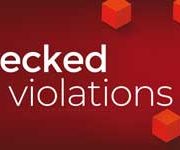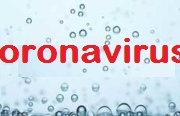SLAPPs and threats. Ossigeno and the surprising data provided by CASE platform
Questo articolo è disponibile anche in:
Presented together with Vera Jourova, they minimize the phenomenon by showing episodes twenty times lower than those certified by Ossigeno
by Luciana Borsatti, Maria Laura Franciosi and Alberto Spampinato
OSSIGENO – 27th , 2021 – It seems only right to say something about the new website against SLAPPs, the English acronym for Strategic Lawsuits Against Public Participation, a term used to indicate the dubious legal action known in Italy under the rough denomination of spurious lawsuits brought against journalists.
The birth of the new site (THE-CASE.eu) was inaugurated on March 26th 2021 by the Vice President of the European Commission and European Commissioner for Values and Transparency Vera Jourova, who participated in an international webinar. The platform is promoted by CASE (Coalition Against Slapps in Europe). This newly formed coalition brings together about forty non-governmental organizations from various European countries, selected from the 60 that recently signed an appeal to the European Commission to issue a European Directive on this matter. Ossigeno per l’Informazione is one of the 20 signatories of the appeal but not part of CASE.
OSSIGENO welcomes with pleasure this great initiative and wishes it maximum success, which it will certainly have when it has resolved some problems that have leapt out at us; above all the fact that this bold initiative has been born with short legs.
This is an Italian expression when something lacks the essential requirement of accuracy. We are sorry to say so, but the data with which the Coalition presented itself at the starting blocks show no small underestimation of the SLAPPs phenomenon in Europe.
We are sorry to have to note this, to see that in reporting a huge social problem, a serious malady of freedom of expression – the promoters of CASE have provided a falsely reassuring picture of a situation that unfortunately is much more serious. , This serious situation is based on confirmed, consolidated data, with which we are fully conversant as we have been studying this unexplored territory of SLAPPS for over ten years.
With apologies to those who already know through having collaborated with us, our exploration of the phenomenon began in 2006 by reporting 40 episodes in Italy. At that time we were rookies and the episodes were based on the reports of the journalists’ union. Then Ossigeno started conducting its own surveys and it was like turning on the light and discovering that a place is ten to one hundred times more crowded than was thought.
Researching further Ossigeno has discovered and listed numerous reasons why gags through the use of SLAPPs are difficult to dismiss. Not because there are individual enemies of good journalists and loyal defenders of critical thinking, but because there are laws that facilitate effective censorship through SLAPPs up to 90 per cent of which go unpunished, an impunity which UNESCO has been pointing out for many years.
Ossigeno has ascertained that in Italy there is more or less the same rate of impunity, as we have been able to verify across a large sample of incidents we have carefully examined over the years. All this is widely known, even by the European Commission and we apologize if we are repeating things that many already know through following Ossigeno’s multi-year activities published in English.
However, it seemed necessary to repeat it, having learned, during the presentation of the CASE website, that this Coalition in collaboration with the University of Amsterdam has “worked in the last two years to identify the full extent and impact of the SLAPPs problem in Europe”. Greenpeace International has provisionally discovered with a sample of 215 cases over a 10-year period a 27 per cent increase in the use of SLAPPs between 2017 and 2018, and a 75 per cent increase between 2018 and 2019. As regards the extent of the phenomenon, CASE researchers found “cases of SLAPPs in 25 European countries, particularly in France (39 cases), Ireland (27), Italy (24) and Poland (17)”. These data will be published on its web site as soon as they are more fully examined.
We are pleased that as regards the period up to 2017, the CASE web site intends to publish the study “Much Mafia: Little News” carried out by Ossigeno per l’Informazione for ECPMF, with the participation of Osservatorio Balcani Caucaso, which reveals, inter alia, that in Italy criminal cases have increased from 4524 in 2015 to 9479 in 2017 of intimidation and threats qualifying as SLAPPs.
We are pleased that to complete the picture the CASE website, on the indication of Article 21, we can cite, albeit generically, the data of the Italian National Institute of Statistics ISTAT according to which in 2017 there were over nine thousand new civil and criminal lawsuits in Italy. for defamation and which points out that they can in large measure be considered SLAPPs.
We are pleased that this and other reports make reference to Oxygen for Information documents published by the ECPMF Resource Centre. Among these studies is the 2016 dossier “Zitto o ti querelo!” (Shut up or I’ll sue you!). These Ossigeno studies have revealed unpublished data from the Italian Ministry of Justice. They have made known, for the first time, the real extent of the phenomenon at the judicial level, their spread throughout the Italian territory, and the worrying trend of these actions. In short, 92 per cent of those legal actions ended after at least 4-6 years with the acquittal of the accused (71 per cent in the preliminary investigation phase). The remaining 8 per cent ended with the conviction of the accused with disproportionate sentences totalling 103 years in prison. Another document cited with a hypertext link and available in the Research Centre is the report of the fact-finding mission “Molta mafia, poche notizie” (Much Mafia, Little News” compiled in 2018 by Ossigeno per l’Informazione for ECPMF, with the participation of Osservatorio Balcani Caucaso. This dossier analyses in depth the nature and causes of the phenomenon and the consequences it has on the freedom of the press and of expression in Italy.
Therefore to say broadly that in Italy there were 24 cases of SLAPPs over a period of ten years concerns us since it suggests that this is the extent of the phenomenon. It is astonishing. It is comparable to saying that the Italian situation has miraculously improved from the historic situation shown by the statistics. If only it were so! The situation is much more dramatic.
In Italy, according to Ossigeno data, which mirror those of authoritative public statistical institutes, there are each year over 10,000 new actions of this type and 69 per cent of them, or 6900, are confirmed as such by the judges’ decisions to dismiss the accusations and acquit the accused individuals, mostly journalists.
To complete the picture, a large number of other SLAPPs can be added that every year: those prosecutable actions (since they include other offences) which each year arbitrarily prevent active citizen participation in public life; actions of a similar type which are cannot be prosecuted because they are not regarded as offences; and finally acts of a similar type which remain unknown because the victims do not have the strength to formally report them.
Most of the details of these actions appear neither in newspapers nor in the statistics of the official institutes, which for some unknown reason do not register these phenomena. And it is difficult to say how many similar cases there are in the rest of Europe, because no one in Europe actively collects this information in as systematic way as Ossigeno per l’Informazione has done for 10 years in Italy where it ascertains on average from 300 to 500 certain incidents and hundreds of other very probable ones. The difference between one year and another is due to the number of observers and experts that Ossigeno is able to deploy to carry out a specialized job, which does not consist in browsing press reviews and websites but in a pro- active search for suppressed news and information that the victims themselves keep confidential, for fear of further reprisals.
But undoubtedly journalists threatened with SLAPPs in these past 10 years in Italy are many more than the 24 in the CASE sample. Among the 5000 victims , Ossigeno has helped in the same decade, journalists, bloggers and human rights defenders publicising their names and their vicissitudes, and helping them to rupture the silence and isolation that make them weak and in many cases unable to defeat those who want to gag them.
We hope, therefore, that the Case Coalition, when it tackles the phenomenon in a way that it deserves, will help us to complete these lists, to give concrete help to each of these victims of unjustifiable and largely unpunished attacks, and to change inadequate laws.
Unfortunately, to achieve this goal – at least as regards Italy – even the measures indicated in the document, also signed by Ossigeno, will not be insufficient to convince the European Commission to propose an anti-SLAPPs directive to curb those that pursue spurious civil lawsuits. Why do we say this? Because the data in Ossigeno’s possession indicate that in Italy of every 100 SLAPPs dealt with by the courts only 2 per cent are judged by civil courts and at least as many SLAPPs are not even prosecutable.
All this indicates that it is necessary to confront these problems by obtaining better data than already exist on what really happens across Europe, and to develop also in other European countries a monitoring activity similar to the methodical and documented one carried out in Italy by Ossigeno per l’Informazione, since it appears so far that no other organisation has done so. Ossigeno per l’Informazione with its methodology, with its tireless efforts has lit a beacon that should also be lit elsewhere in Europe to identify and publicise in detail the many SLAPPs that remain hidden and undocumented and which can only be revealed by using adequate resources, suitable methodologies and specialized observers.
ASP




Leave a Reply
Want to join the discussion?Feel free to contribute!